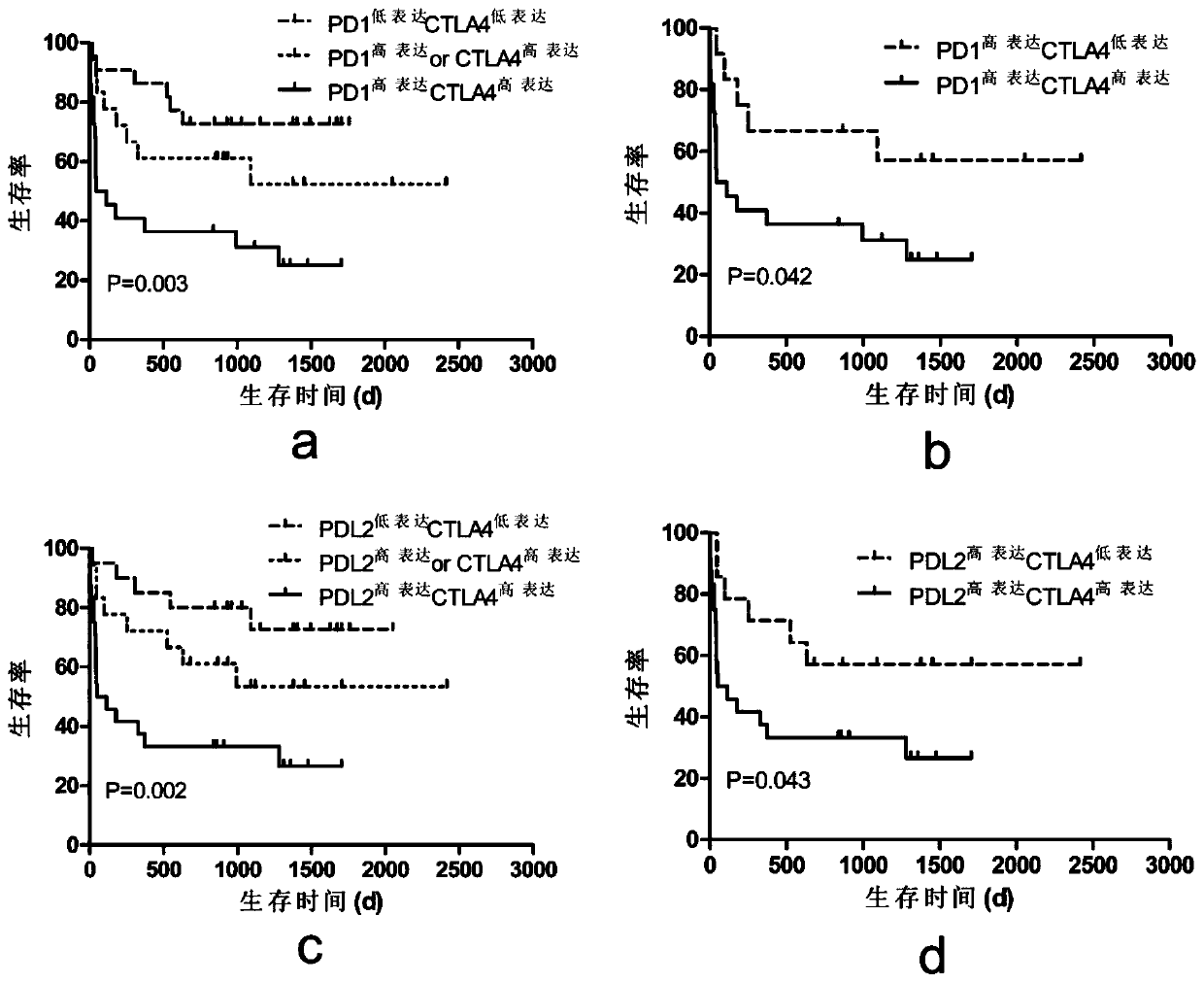Application of PD1 (programmed cell death 1)-CTLA4 (cytotoxic T lymphocyte-associated antigen-4) and/ or PDL2 (programmed cell death 1 ligand 2)-CTLA4 for preparing kit for predicting AML (acute myeloid leukemia) prognosis
A technology of PDL2-CTLA4 and PD1-CTLA4, applied in the field of biomedicine, can solve the problems that the prognosis of AML patients cannot be fully evaluated, and achieve the effects of high possibility of poor prognosis, stable method, and simple and easy method
- Summary
- Abstract
- Description
- Claims
- Application Information
AI Technical Summary
Problems solved by technology
Method used
Image
Examples
Embodiment 1
[0064] (1) Bone marrow was collected under the premise of signing the informed consent form with the patient. Bone marrow samples from 62 cases of first-onset AML and 12 cases of healthy adults were collected from the Department of Hematology, Guangzhou First People's Hospital. All samples were taken from the bone marrow anticoagulated with heparin at the time of admission. This part of the research protocol has been approved by the ethics committee of the unit. At the same time, clinical data such as survival time and survival status of AML patients were collected (as shown in Table 1).
[0065] (2) Isolation of mononuclear cells in bone marrow. Take 4mL of lymphocyte separation medium (Ficoll, density 1.077) and add it into a 15mL centrifuge tube, spread the diluted anticoagulated bone marrow specimen suspension on the separation medium, and centrifuge at 1500rpm for 15 minutes in a horizontal centrifuge. Transfer the single nuclear layer in the middle to another 15mL centr...
PUM
 Login to View More
Login to View More Abstract
Description
Claims
Application Information
 Login to View More
Login to View More - R&D
- Intellectual Property
- Life Sciences
- Materials
- Tech Scout
- Unparalleled Data Quality
- Higher Quality Content
- 60% Fewer Hallucinations
Browse by: Latest US Patents, China's latest patents, Technical Efficacy Thesaurus, Application Domain, Technology Topic, Popular Technical Reports.
© 2025 PatSnap. All rights reserved.Legal|Privacy policy|Modern Slavery Act Transparency Statement|Sitemap|About US| Contact US: help@patsnap.com



